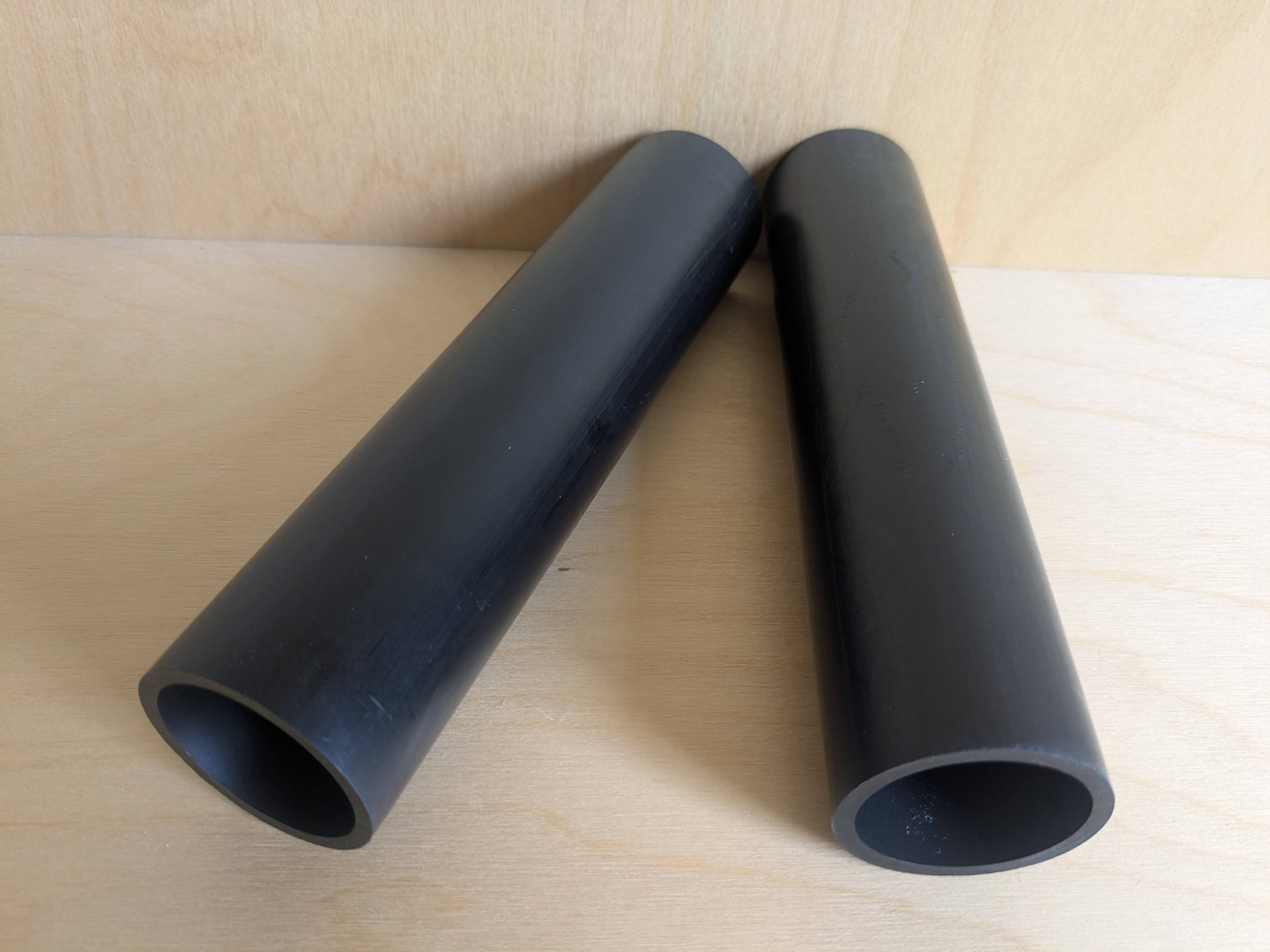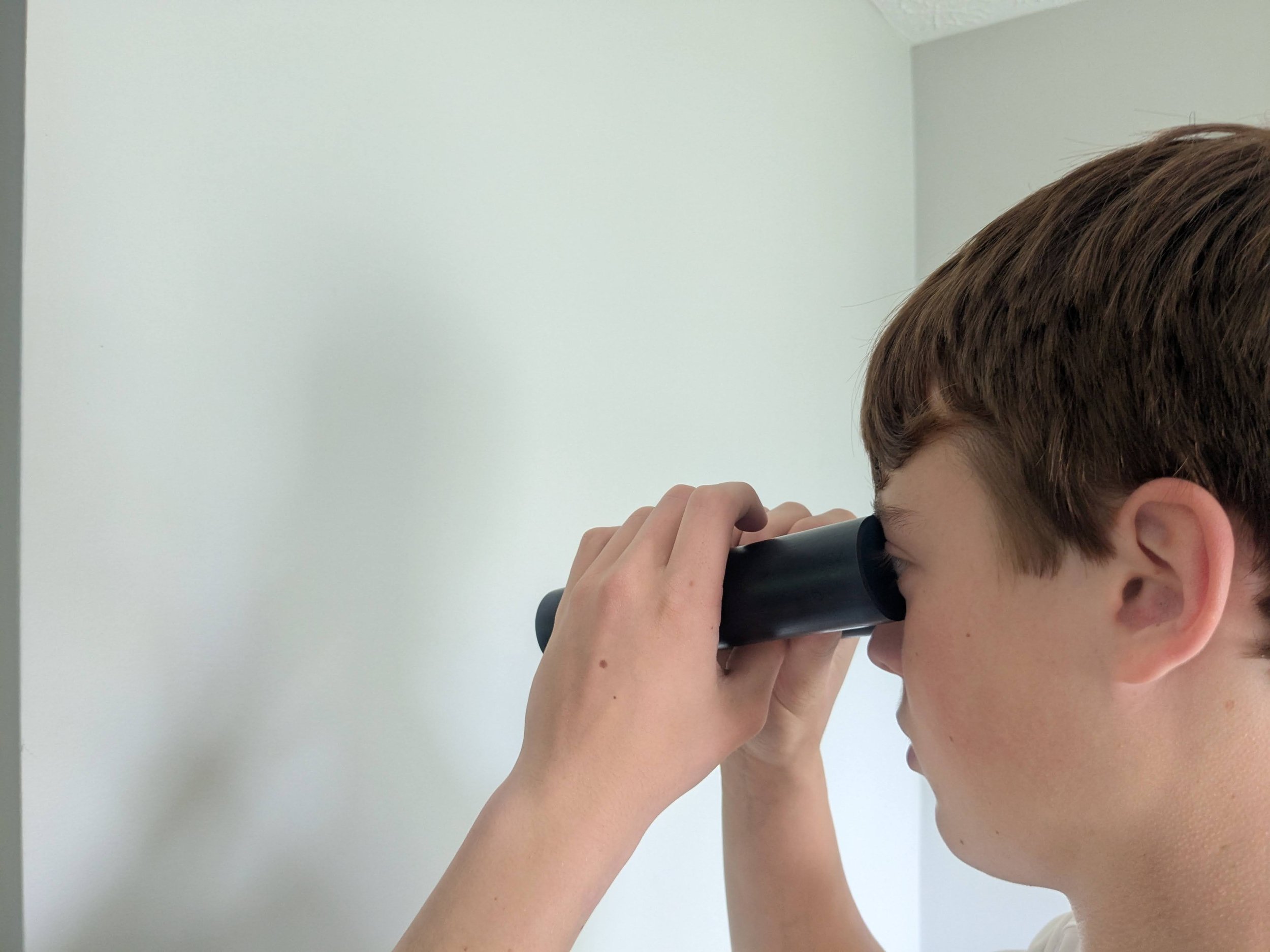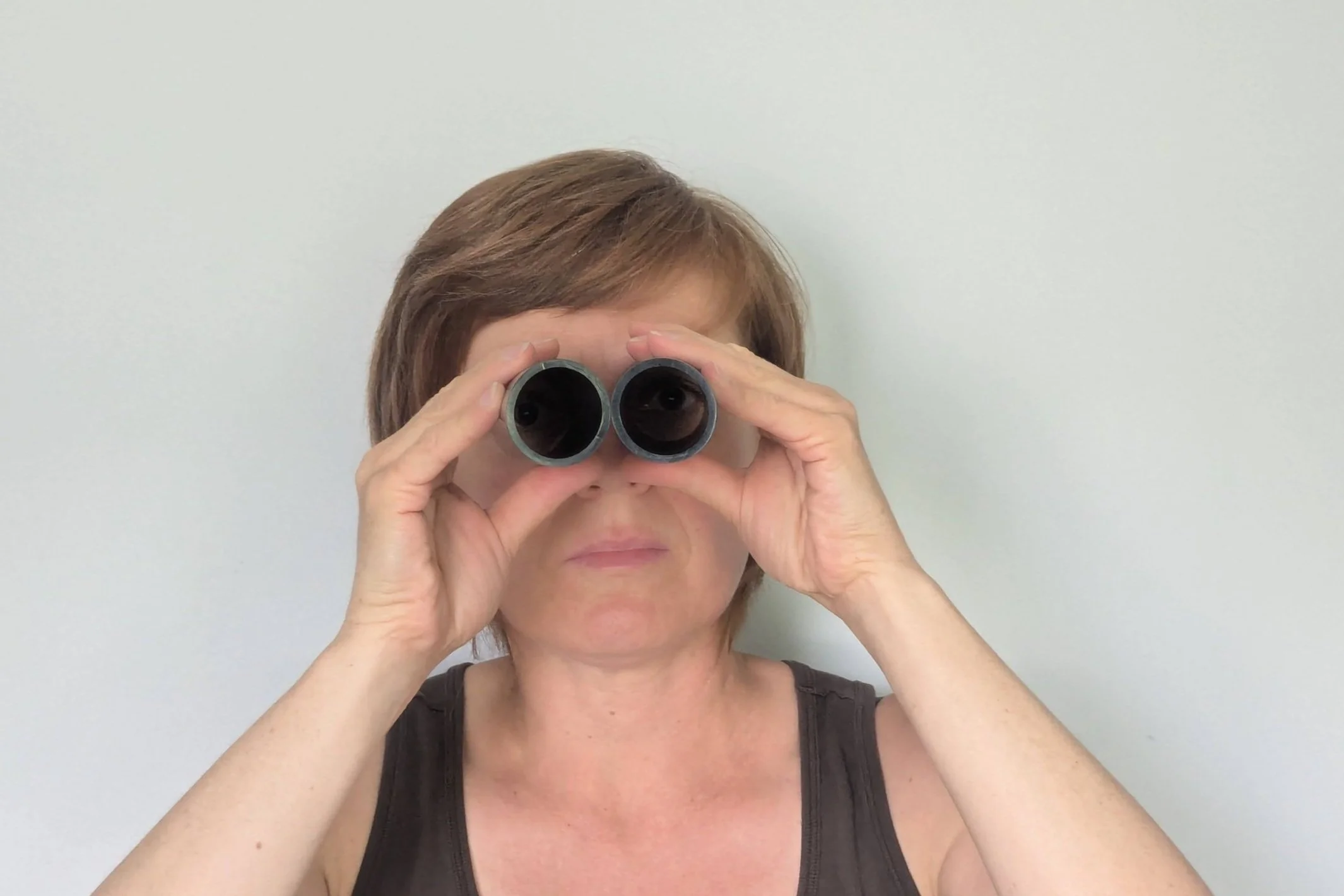ARE YOUR EYES LOOKING AT THE SAME SPOT?
People are often surprised when they realize that they are not looking at what they think they are looking at. As a result, their vision is not as clear as they would like it to be. You know by now that the fovea centralis has to be focussed on the point of interest in order for the point to be seen with absolute clarity. If the foveal focus is somewhere else, then the point of interest falls into the zone of the less clear vision. It also prevents seeing the world in 3D, judging distance, speed and other skills that depend on excellent fusion. Finally, the lack of eye alignment may lead to double vision. So, enough of the scares. Let’s practice to ensure that your aiming skills are top notch.
To evaluate and improve this skill, you will need to use a string/cord with a bead (Brock String) and a pair of tubes.
LET’S PRACTICE
SPYING WITH TUBES
Let’s stress this one more time. Behind great binocular vision is the ability of the eyes to look at a singular spot. When the two eyes look at the same spot, the eyes submit two slightly different images of the exact same object/stimuli to the brain. That is when the brain can merge them (fuse them) into an image that you then see.
This technique is a playful way for teaching the eyes to align with each other. Advanced versions of this technique (beyond this class) will further help with the release of strabismus, the release of amblyopia and will train foveal focus.
For this technique you will need two tubes, a blank wall at least 6 feet away from you and something to mark a target spot (a tiny piece of painter’s tape or a piece of the sticky part of a post-it work well for this purpose)
Place your target marker on the blank wall, then stand 6+ feet away from the wall and face the wall. Bring the tubes to your eyes (do not push on your eyes, barely touch your face). Point the tubes away from each other, one to the left and one to the right. Look at the wall (your eyes focusing on the wall) and notice that you are looking through 2 circles.
Close your left eye and notice the circle you see with the right eye. Close your right eye and notice the circle you see with your left eye.
Now, while still looking at the wall, slowly adjust the tubes until the two circles merge into one, until the opening is seen as a singular perfect circle. Depending on the distance between your eyes and the target spot, the tubes can be relatively parallel to each other or they may be angled towards each other, or even touch.
If you do not see a perfect circle, keep looking and use your imagination to create the circle. Use your mind to imagine what it should look like, then look and allow the circle to appear.
Once you have the circle, align the circle with the target spot on the wall. Move your head with the tubes to look just left to the target spot and just to the right of the target spot, then back to the center, slightly above, slightly below, then back to the center. Keep looking at the various areas on the wall through the singular circle.
When this becomes easy, look at a spot on the floor, look at more busy objects (still in the distance), look to your left and right, at the ceiling, keeping the singular circle present and looking through it.
Stop at any time to relax your eyes. Use your imagination whenever the circle disappears or becomes less than singular or less than perfectly round.


Practice Lenses: no lenses
Tips & Watch outs:
If you feel like you need a target to look at from the start, then do so. Just make sure you are not staring.
Time to time close one eye, then the other to ensure that both eyes are looking (that one eye is not suspended during the practice)
As you advance, look at more and more busy spots and look at objects at various distances
Make this a game! To look with interest, find objects of interest to “spy” on. Study your favorite painting through the tubes, look at birds in your yard
STRING CROSS
This is a somewhat advanced practice that leads to eye alignment and correct fusion of the two images that are coming from each eye. If there is a vast difference between the acuity of your left and right eyes, skip this practice and come back to it at the end of the module, or once you bring the acuity of both eyes to about the same level.
Attach your brock string in front of you with the far end of the string below your eye level. The string will be viewed with a slightly downwards slope
Place a bead on the brock string at a distance at which you can see it clearly
Stand straight with your shoulders relaxed and bring the brock string to your nose. Do not lean forward or back, towards or away from the string. Then look at the bead
Become aware of the string splitting into two strings in front of and behind the bead. Be aware of the two strings crossing right at the bead, at your point of focus. As if the string formed an X with the bead right in the center
Both strings should look about the same, be of the same thickness and clarity
If you see this, then move the bead to a new distance and observe the same




Practice Lenses: no lenses
Tips & Watch outs:
First test this technique at a few distances to see if there is one that is the closest to the described scenario. Once you find that distance, start your practice there and only move the bead after you succeed reliably.
Does each string have a different thickness or clarity? Look at the string with each eye separately and remember what it looks like, then look at it with both eyes together. Repeat many times.
Do the strings cross before or after the bead? Close your eyes and imagine the strings crossing at the bead. Then open your eyes and look at the bead. Do not stare. Do not try to hold the image. Even a minor improvement is a win! Repeat many times.
Is there only one string? Work on activating your eyes, one of your eyes is most likely not contributing to your seeing.
Can you not see the bead clearly from any distance? Work on your acuity first.
If after a while you realize that this is too difficult, you should work on eye activation first (for example the Ball at a Target technique) and ensure you are able to imagine with your eyes closed (or even open). The lack of either of these skills will make your practice significantly more difficult.



